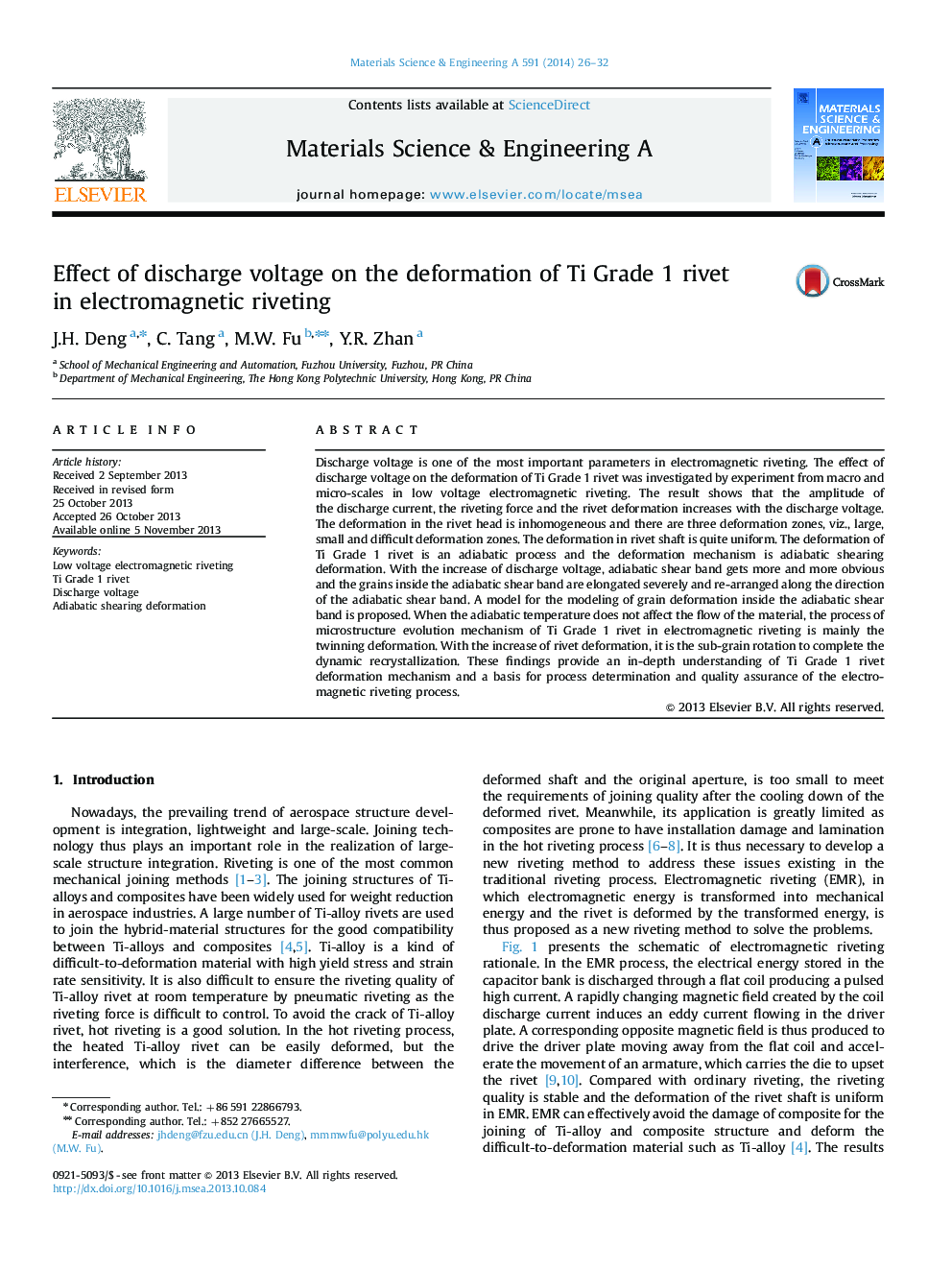| Article ID | Journal | Published Year | Pages | File Type |
|---|---|---|---|---|
| 1575533 | Materials Science and Engineering: A | 2014 | 7 Pages |
Abstract
Discharge voltage is one of the most important parameters in electromagnetic riveting. The effect of discharge voltage on the deformation of Ti Grade 1 rivet was investigated by experiment from macro and micro-scales in low voltage electromagnetic riveting. The result shows that the amplitude of the discharge current, the riveting force and the rivet deformation increases with the discharge voltage. The deformation in the rivet head is inhomogeneous and there are three deformation zones, viz., large, small and difficult deformation zones. The deformation in rivet shaft is quite uniform. The deformation of Ti Grade 1 rivet is an adiabatic process and the deformation mechanism is adiabatic shearing deformation. With the increase of discharge voltage, adiabatic shear band gets more and more obvious and the grains inside the adiabatic shear band are elongated severely and re-arranged along the direction of the adiabatic shear band. A model for the modeling of grain deformation inside the adiabatic shear band is proposed. When the adiabatic temperature does not affect the flow of the material, the process of microstructure evolution mechanism of Ti Grade 1 rivet in electromagnetic riveting is mainly the twinning deformation. With the increase of rivet deformation, it is the sub-grain rotation to complete the dynamic recrystallization. These findings provide an in-depth understanding of Ti Grade 1 rivet deformation mechanism and a basis for process determination and quality assurance of the electromagnetic riveting process.
Keywords
Related Topics
Physical Sciences and Engineering
Materials Science
Materials Science (General)
Authors
J.H. Deng, C. Tang, M.W. Fu, Y.R. Zhan,
